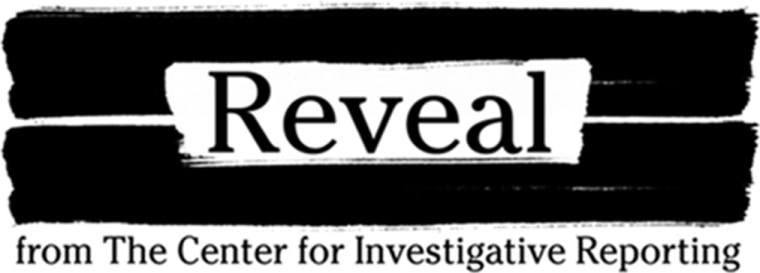The full version of this story was originally published by Reveal from The Center for Investigative Reporting.
Jessie Suren is an energetic 28-year-old who wanted a career in law enforcement. Albert Lord is a 70-year-old former accountant who became a multimillionaire executive. The two have never met, but their stories tell the history of America's student debt crisis.
Suren attended a free boarding school for underprivileged youth in Hershey, Pennsylvania, and enrolled in La Salle University in Philadelphia. Scholarships didn't cover the cost of the private college, so she borrowed about $71,000, much of it from Sallie Mae, the financial giant of the student loan industry.
Click Here to Download the Reveal Podcast from The Center for Investigative Reporting
Suren did well in school. But a job with the U.S. Marshals Service fell through, and by graduation in 2010, she had a soaring loan balance and no career prospects.
In the years since then, Suren has scrambled to keep current on her loans, sometimes working 16 hours a day at two low-paying jobs. Her finances are incredibly tight, and she has made no headway on her loans. Today, her balance tops $90,000.
Click Here to Read the Full Version of This Story
"My loans are a black cloud hanging over me," she said. "I'm a student debt slave."

For Lord, student loans have been the road to riches. He was the CEO who built Sallie Mae into a financial colossus through fees, interest and commissions on billions of dollars of federally guaranteed student loans. For delivering handsome profits to investors, Lord received pay and stock worth hundreds of millions of dollars.
His success made him one of the highest-paid executives in Washington, gave him entree into an elite circle of power brokers and won him a seat on the board of the Washington Redskins Charitable Foundation. With his wealth, he started a private equity company and built his own golf course, Anne Arundell Mannor, near the Chesapeake Bay. After a 30-year career at the forefront of the student loan industry, Lord retired in 2013 and now shuttles between houses in Naples, Florida, and Annapolis, Maryland.
Listen: Who's Getting Rich Off Your Student Debt?
Lord declined to be interviewed for this story. In an email, he blamed the federal government and universities for the surge in student debt.
Almost every American knows someone like Suren, an adult burdened by a student loan. Fewer know that growing alongside the legions of indebted students is a formidable private industry that has been enriched by student debt.
Decades ago, the federal government relinquished direct control of the student loan program, opening its bank to corporations concerned with profits, not diplomas. Private equity companies and Wall Street banks seized on the flow of federal loan dollars by peddling loans that students sometimes could not afford and then collecting fees from the government to hound those students when they defaulted.
Once in place, the privatized student loan industry has succeeded largely in preserving its status in Washington. Student loans are virtually the only consumer debt that cannot be discharged in bankruptcy except in the rarest of cases — one of the industry's greatest lobbying triumphs.
At the same time, societal changes conspired to drive up the basic need for these loans: Middle-class incomes stagnated, college costs soared and states retreated from their historical investment in public universities.
If states had continued to support public higher education at the rate they had in 1980, they would have invested at least an additional $500 billion in their university systems, according to an analysis by Reveal from The Center for Investigative Reporting.
That's an amount roughly equal to the outstanding student debt now held by those who enrolled in public colleges and universities.
The calculus for students and their families changed drastically, with little notice. Today, there is a student debt class like no other: more than 40 million Americans bearing $1.3 trillion in debt that's altering lives, relationships and even retirement.
One of the winners in the profit spree behind this debt: the federal government. By the Department of Education's own calculations, the government earns in some years an astounding 20 percent on each loan.
"The United States government turns young people who are trying to get an education into profit centers to bring in more revenue for the federal government," Sen. Elizabeth Warren, D-Mass., said on the Senate floor in February. "This is obscene. The federal government should be helping students get an education — not making a profit off their backs."
The student debt crisis is a microcosm of America — a tale of the haves and have-nots. Students who attend the richest schools often have less debt than students who graduate from state colleges. Students from low- or moderate-income families who attend for-profit schools usually take on the heaviest debt load of all.
The imbalance between those with debt and those without will exacerbate income inequality for decades to come.
The Obama administration has taken steps toward reform. It has eliminated the financial middlemen who long collected a fee to issue federal loans. The government now loans directly to students, though private companies continue to administer the loans. New regulations limit student debtors' federal loan payments to 10 percent of their income.
But the basic system remains in place: Contractors with historically little oversight from the federal government have an incentive to make a profit by collecting as much as they can from student debtors.
Today, student debt is a $140 billion-a-year industry. And unlike many of its customers, the industry's future looks bright.
Strolling through a rally of New York University students protesting rising loan debt, a writer for a debt industry publication found himself face to face with students carrying placards and wearing T-shirts proclaiming their frustration. But all he could see were dollar signs.
"I couldn't believe the accumulated wealth they represented — for our industry," he wrote in insideARM. "It was lip-smacking. … We are in for lifetime employment!"
The NYU rally was in 2011. In the five years since, total debt has risen by nearly half a trillion dollars.
